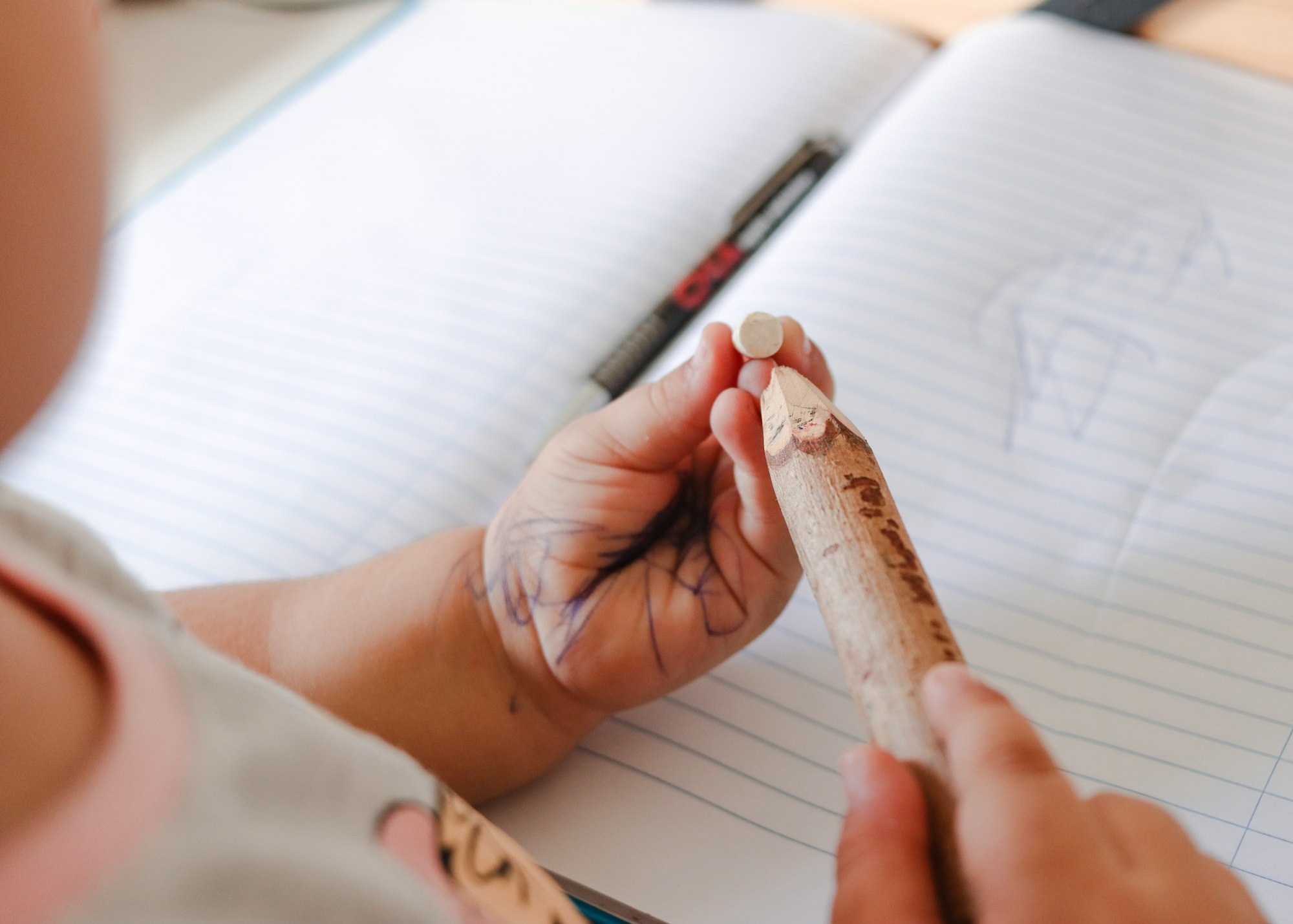Parents often notice when daily routines—getting dressed, tying shoes, joining a playground game—turn into marathon events, riddled with frustration and confusion. Sometimes, despite a child’s best efforts, simple movements remain stubbornly tricky, and handwriting assignments feel like climbing mountains. These challenges can raise unsettling questions: Is my child just a little uncoordinated, or is something deeper at play? Enter Developmental Coordination Disorder (DCD): a condition both perplexing and, for many families, surprisingly common. Roughly 5–6% of school-aged children face this enigmatic challenge, wrestling with coordinated movement despite otherwise typical learning and thinking abilities. Understanding DCD means more than labeling clumsiness—it means unraveling complexities that touch every corner of daily life, from self-esteem to social play. Here’s what every parent deserves to know—and, perhaps even more profoundly, how to respond with compassion, knowledge, and confidence.
What is Developmental Coordination Disorder? Dispelling myths, highlighting realities
Developmental Coordination Disorder is not a problem of willpower or laziness, nor does it imply cognitive delay. Rather, think of it as a persistent difference in how the brain structures movement—akin to a software glitch rather than a hardware failure. While peers seem to acquire skills like catching balls, pedaling bikes, or using cutlery with casual ease, children with DCD navigate these waters with noticeable difficulty. Why? The brain processes responsible for motor planning (deciding how to move), motor execution (actually moving), and sensory integration (making sense of what one feels and sees) function just a bit differently. Importantly, DCD is entirely distinct from medical conditions like cerebral palsy or muscular diseases.
Children with DCD might dazzle with imaginative storytelling, quick thinking, or kindness. But when pencils, zippers, or playground games enter the scene, the challenges often amplify. Some children are branded “clumsy” or labeled as daydreamers, but these stereotypes miss the mark. Dyspraxia—a synonym for DCD—captures the heart of the matter: intentional movements become tangled, not because of poor motivation, but because neural signals struggle to travel smoothly between the brain and the body.
Spotting the signs: When is clumsiness more than just a phase?
Every child fumbles sometimes. Yet, certain patterns should spark attention:
- Difficulty with fine motor tasks (holding a pencil, handling fork and knife, buttoning shirts)
- Handwriting that remains nearly illegible despite practice and support
- Gross motor challenges—running, climbing, or balancing prove unusually difficult
- Regular tripping, dropping objects, or colliding with furniture
- Reluctance to join sports, group activities, or new movement-based games
- Laborious effort spent on tasks that seem routine for age peers
Parents might observe an exhausting struggle to sequence movements, where even dressing takes the coordination of a mini chess match. Emotional signs also emerge: frustration flashes in the eyes, self-esteem falters, and avoidance creeps in as children sense they aren’t keeping pace. While it’s tempting to attribute these hurdles to temperament or inattention, the root is neurodevelopmental, not behavioral.
What causes Developmental Coordination Disorder? Exploring brain differences and early risk factors
The origins of DCD reside deep within the developing brain. Atypical neural connectivity—meaning the way different brain regions communicate—plays a starring role. Researchers point to the parietal cortex (where sensory information meets motor commands), the frontal cortex (responsible for planning), and the cerebellum (master of balance and timing) as key players. White matter tracts—think of them as brain “cables”—can be slightly less efficient in children with DCD, hampering the quick relay of information needed for smooth, coordinated motion.
Several risk factors raise the odds: premature birth, low birth weight, and prenatal substance exposure all appear linked to increased likelihood of DCD. There’s also a genetic component—siblings and close relatives may encounter similar challenges, though no single gene has been pinpointed as the culprit. Environment and early developmental health intersect here, nudging the brain toward less predictable wiring.
Types and profiles: Not all DCD looks the same
No two children with Developmental Coordination Disorder are identical in their experience. Some show pronounced fine motor difficulties, perhaps wrestling with tiny LEGOs or the tangled choreography of tying shoelaces, while others reveal weaknesses mainly in gross motor skills: balancing, jumping, or running in a coordinated fashion. Executive function—the orchestration of attention, memory, and inhibition—may complicate the picture: a child may struggle to remember the steps of a process or become easily distracted mid-task.
DCD frequently links arms with other neurodevelopmental conditions. ADHD stands out, with an estimated half of children diagnosed with both. Autism spectrum disorder and specific learning disabilities such as dyslexia or dysgraphia may also present, each layering complexity onto diagnosis and intervention. Understanding the individual “profile” is essential for properly supporting each child’s strengths and navigating their challenges.
Diagnosis: Untangling the puzzle with science and observation
Pinpointing Developmental Coordination Disorder is an involved process—one that weaves together parent interviews, careful history of motor milestones, and standardized tools. Gold-standard assessments like the Movement Assessment Battery for Children (MABC-2) measure manual dexterity, balance, and eye-hand coordination with evidence-based precision. The Bruininks-Oseretsky Test of Motor Proficiency (BOT-2) and Developmental Coordination Disorder Questionnaire (DCD-Q) further help clarify the child’s unique patterns.
Diagnostic criteria require:
- Substantial motor coordination difficulties for the child’s age
- Interference with daily functioning at home and school
- Early onset (typically before age 5)
- Difficulty that isn’t better explained by other medical or intellectual causes
Children are generally identified after the age of five, when delays or discrepancies become more apparent and substantial. Too-early intervention risks mislabeling; too-late diagnosis can undermine confidence and learning. Gender and cultural biases influence detection, with boys diagnosed more often, possibly due to higher rates of referral or differing expectations. Multi-professional input—pediatricians, occupational therapists, psychologists, and educators—offers the best shot at accurate diagnosis and comprehensive support planning.
Living with Developmental Coordination Disorder: Everyday realities and effective responses
How can families turn knowledge into action? Evidence points squarely toward individualized, targeted intervention. Occupational therapy, particularly the Cognitive Orientation to daily Occupational Performance (CO-OP), empowers children to problem-solve, break tasks into digestible steps, and rehearse challenging skills in real-world contexts. Physical therapy addresses balance, strength, and whole-body coordination, not through repetitive drills but by matching movement to each child’s interests and goals.
At school, flexibility is a powerful ally. Allowing more time for tests, using computers to bypass handwriting difficulties, and providing step-by-step instructions all tip the scales toward success. Individualized Education Plans (IEPs) formalize these adjustments, giving parents and teachers a common roadmap.
Home remains a fertile ground for progress—creating an environment where patience supersedes perfection and effort outshines speed. Adaptive tools, special utensils, and visual cues for step-by-step routines often help. Breaking complex tasks into manageable parts and celebrating every bit of progress—no matter how small—fosters confidence and autonomy.
Yet, not all work is physical. Emotional wellbeing lies at the heart of thriving with DCD. Children benefit when adults recognize and validate their frustration, avoid negative labels, and reinforce both strengths and persistence. Mental health support, where necessary, can empower children to process feelings of anxiety, frustration, or social isolation.
Physical activity, community, and long-term outlook
Active play isn’t just for motor skills—it’s medicine for the whole body. Children with Developmental Coordination Disorder flourish when invited into movement through swimming, cycling, or nature walks, where the pace and pressure suit their needs. Modified sports, family-centered activities, and a “try and try again” spirit punctuated by fun, not perfection, open doors for skill practice and memory-making.
Long-term, DCD does not vanish with adolescence. Many adults recognize its fingerprints on daily challenges, from parallel parking to typing speed. Yet, with early support and well-developed coping skills, individuals can master academic, work, and independent living tasks. Transitions—be they starting high school, moving out, or entering the workplace—often demand renewed attention to strategies and self-advocacy.
Awareness, advocacy, and the path forward
Understanding Developmental Coordination Disorder doesn’t end at the clinic or classroom door. Societal attitudes shape opportunities and self-image, making advocacy vital. As diagnosis becomes more common and knowledge broadens among professionals—thanks to advocacy groups, research, and media attention—stigma fades and possibilities expand.
Networking with other families, joining support groups, and sharing experiences gives voice to challenges, but also to victories. Teachers, therapists, and pediatricians increasingly approach children with DCD as partners—drawing on the latest findings in neuroimaging, genetic studies, and interventions tailored for each child’s path. Continued research, especially into adult outcomes and culturally sensitive assessment, offers new hope for greater understanding and inclusion.
Key Takeaways
- Developmental Coordination Disorder is a lifelong neurodevelopmental condition impacting both fine and gross motor skills but does not diminish a child’s intellect or worth.
- Early identification and personalized support transform not only academic and motor outcomes but also confidence and resilience.
- No single child with DCD is like another—strengths and challenges are unique, and interventions work best when tailored accordingly.
- Collaboration among parents, educators, therapists, and healthcare professionals builds the strongest foundation for progress.
- Emotional wellbeing should be nurtured alongside motor skills; fostering self-esteem is just as important as teaching handwriting.
- Research and advocacy are steadily increasing awareness and driving advances in diagnosis, intervention, and long-term support.
- Parents have access to practical tools, compassionate guidance, and knowledgeable professionals ready to help them and their child thrive.
- For tailored advice and free child health questionnaires, discover the Heloa app, a resource trusted by thousands of families.
Developmental Coordination Disorder, while often bewildering at first glance, does not define a child’s limits—it simply shapes the journey. With empathy, patience, and evidence-based strategies, families can help their children unlock new levels of confidence and independence, one determined step at a time.
Questions Parents Ask
Is Developmental Coordination Disorder considered a disability?
Developmental Coordination Disorder can be considered a disability, especially when the challenges with motor skills significantly affect everyday activities such as self-care, handwriting, and participating in group settings. In some regions, a diagnosis of DCD allows for access to special accommodations at school or extra support services. This classification isn’t meant to label a child negatively but to help secure the help and understanding they deserve. Each child’s situation is unique—what matters is recognizing individual needs and finding the right support.
Does Developmental Coordination Disorder last into adulthood?
DCD doesn’t just disappear with age. While some children do see improvements, many continue to experience coordination difficulties as adolescents and adults. The ways these challenges show up may change over time—tasks like driving or managing job responsibilities might become areas needing support. Early intervention, learning helpful strategies, and nurturing self-confidence can make a real difference in how individuals manage DCD throughout life. Rassurez-vous, a fulfilling and independent life remains entirely possible.
Can you diagnose Developmental Coordination Disorder in teenagers or adults?
Absolutely. Although DCD is often identified in childhood, teenagers and adults can also be diagnosed. Sometimes, motor challenges become more noticeable with increased academic, social, or work demands. Assessment typically involves a careful review of developmental history and current motor abilities. It’s never too late to seek support—understanding the underlying reason for coordination difficulties can be a huge relief and open the door to targeted strategies and therapies, bringing greater confidence and autonomy at any age.
Further reading:









